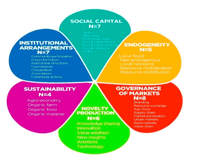i INP-WEALTHPK
Faiza Tehseen
Pakistan’s cottage industry is working below its potential. To extract true socio-economic benefits from this sector, collaboration between the small and medium enterprises (SMEs) at both rural and urban levels is very important, Moazzam Ghurki, President Pakistan China Joint Chamber of Commerce and Industry (PCJCCI), told WealthPK.

He suggested that rural and urban SMEs should work together and use their large workforce to earn a stable income. He said that China’s urban-rural coordinated development model was a good example to follow. He described the model as a combination of individual and collective economic activities that involved small farms and household businesses. He added that China implemented various reforms in politics, government, planning, administration, and economy to make the model work. He said that the reforms aimed to improve agricultural mechanization, regional planning, industrial zones, land use rights, and service and infrastructure equality. Moazzam cited ‘Aik Hunar, Aik Nagar’ (AHAN) project as an example launched by the Small and Medium Enterprises Development Authority (SMEDA) in 2007. It was the best platform that connected the rural artisans with fashion designers to add value to their handmade products. As a result, Pakistani rural products got popular in both local and international markets. But, unfortunately, it is no longer operational now. In order to provide more opportunities in the rural areas, it is necessary to revive this mode. Fang Yulong, Senior Vice President of PCJCCI, told WealthPK that public prosperity is a key goal of the Chinese modernization, which aims for a bright socio-economic future.
He said that promoting common prosperity among farmers and other rural communities is a vital step to eradicate poverty. Discussing the importance of replicating the Chinese model of urban-rural coordinated development, PCJCCI Vice President Hamza Khalid urged the Pakistani government to prioritize economic development. He said that the main focus should be on creating a framework that supports SMEs in the rural areas and connects them with the urban business centers. He also shared the success story of Pushan village in Eastern China’s Zhejiang province, where a farmer’s income has increased many times in two years. He said that Pakistan could also achieve such results. According to the Digital Census, 2023 reported by the Council of Common Interests (CCI), the total population of Pakistan is 241.49 million with an annual growth rate of 2.55%. According to the census, more than 61% of the population lives in rural areas. However, many rural communities are poor despite the country’s agricultural economy. Pakistan urgently needs to link its urban and rural economic activities. This would create jobs and boost the cottage industries. It would also increase the government’s revenue and start a sustainable economic cycle.
Credit: INP-WealthPk









